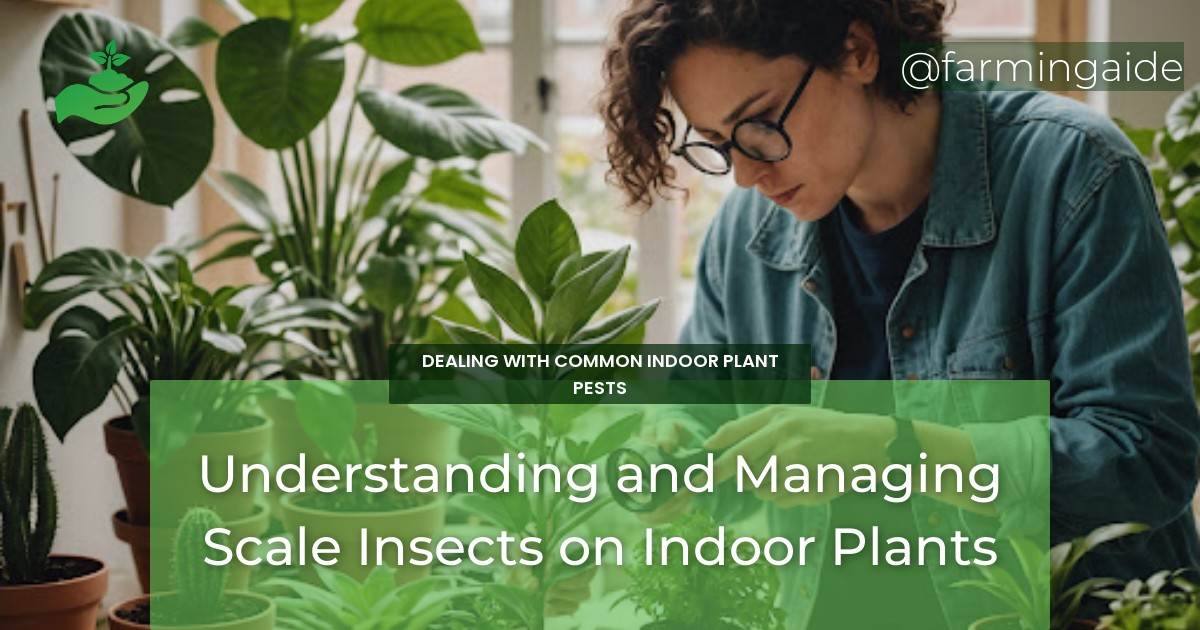As indoor plant enthusiasts, we’ve all been there – proudly displaying our lush green friends, only to notice tiny, mysterious bumps or white, cotton-like substances on the leaves. The culprits behind this unwelcome surprise? Scale insects. These tiny, sap-sucking pests can wreak havoc on our beloved indoor plants, leaving them weakened and vulnerable to disease. But fear not! In this comprehensive guide, we’ll delve into the world of scale insects, exploring their identification, impact, prevention, and management. By the end of this article, you’ll be equipped with the knowledge to protect your plants and keep those pesky scale insects at bay.
Key Takeaways
- Scale insects are tiny, sap-sucking pests that can infest indoor plants.
- Early detection and prevention are crucial in managing scale insect infestations.
- Natural remedies, chemical treatments, and integrated pest management strategies can be used to control scale insects.
- Proper plant care and maintenance are essential in preventing scale insect infestations.
- Understanding the types of scale insects and their habits can help in effective management.
Introduction to Scale Insects
Scale insects are a type of sap-sucking insect that feed on plant sap, leading to weakened plants and reduced growth. These tiny insects can be found on a wide range of plants, including indoor plants, trees, and shrubs. Scale insects are often unnoticed until the infestation is severe, making early detection crucial in preventing damage.
There are over 1,000 species of scale insects, with the most common types found on indoor plants being armored scales, soft scales, and mealybugs. Understanding the different types of scale insects and their habits is essential in effective management and prevention.
Identifying Scale Insects
Scale insects can be difficult to identify, as they often resemble small bumps or cotton-like substances on the plant’s leaves or stems. However, there are a few key characteristics to look out for:
- Small, immobile insects with a waxy or cotton-like coating.
- Scale insects are usually white, yellow, or brown in color.
- They can be found on the leaves, stems, or roots of the plant.
Types of Scale Insects on Indoor Plants
| Type of Scale Insect | Description | Common Host Plants |
|---|---|---|
| Armored Scales | Protected by a hard, waxy coating. | Citrus, apple, and pear trees. |
| Soft Scales | No protective coating, vulnerable to insecticides. | Oleander, fig, and persimmon trees. |
| Mealybugs | White, cotton-like coating, often found in clusters. | Succulents, cacti, and ornamental plants. |
Impact of Scale Insects on Indoor Plants
Scale insects can have a devastating impact on indoor plants, causing weakened growth, reduced yields, and increased susceptibility to disease. These pests can also secrete honeydew, a sweet, sticky substance that attracts ants and promotes fungal growth.
ALSO READ
Signs of Infestation
Some common signs of scale insect infestation include:
- Yellowing or distorted leaves.
- White, cotton-like substances on the leaves or stems.
- Stunted or weakened plant growth.
- Honeydew or sooty mold on the leaves or surrounding surfaces.
Scale insects can cause significant damage to indoor plants, including:
- Weakened plant growth and reduced yields.
- Increased susceptibility to disease and pests.
- Reduced plant aesthetic value.
- Increased risk of plant death.
Preventing Scale Insect Infestations
Preventing scale insect infestations is crucial in maintaining healthy, thriving indoor plants. Here are some best practices for indoor plant care:
Best Practices for Indoor Plant Care
To prevent scale insect infestations, it’s essential to maintain good plant care practices, including:
- Proper watering and humidity control.
- Regular fertilization and pruning.
- Monitoring plants regularly for signs of infestation.
- Quarantining new plants before introducing them to the indoor garden.
ALSO READ
Monitoring and Early Detection
Regular monitoring and early detection are crucial in preventing scale insect infestations. Here are some tips for detecting scale insects:
- Inspect plants regularly for signs of infestation.
- Use a hand lens or magnifying glass to examine plants closely.
- Monitor plants for signs of honeydew or sooty mold.
Managing Scale Insects on Indoor Plants
Managing scale insects on indoor plants requires a combination of natural remedies, chemical treatments, and integrated pest management strategies. Here are some effective methods for controlling scale insects:
Natural Remedies
Natural remedies can be an effective way to control scale insects, including:
- Insecticidal soap or neem oil.
- Horticultural oil or canola oil.
- Pruning infested areas or removing heavily infested plants.
Chemical Treatments
Chemical treatments can be used to control scale insects, including:
- Insecticides like pyrethrin or permethrin.
- Systemic insecticides like imidacloprid.
- Foliar sprays or soil drenches.
Integrated Pest Management Strategies
Integrated pest management strategies involve combining natural remedies, chemical treatments, and cultural controls to manage scale insect infestations. This approach can be highly effective in controlling scale insects and promoting plant health.
Recovery and Maintenance After Treatment
After treating for scale insects, it’s essential to maintain good plant care practices to promote plant recovery and prevent re-infestation.
Restoring Plant Health
To restore plant health, it’s essential to:
- Provide optimal growing conditions.
- Fertilize plants regularly.
- Prune or remove damaged areas.
Long-term Care Tips
To prevent re-infestation, it’s essential to:
- Monitor plants regularly for signs of infestation.
- Maintain good plant care practices.
- Quarantine new plants before introducing them to the indoor garden.
Conclusion and Further Resources
In conclusion, understanding and managing scale insects on indoor plants requires a combination of knowledge, prevention, and control methods. By following the tips and strategies outlined in this article, you’ll be well on your way to protecting your indoor plants from these pesky pests. For further resources and information, be sure to check out:
- Local nurseries or gardening stores for expert advice.
- Online resources like gardening forums or pest management websites.
- Local extension offices or universities for research-based information.


